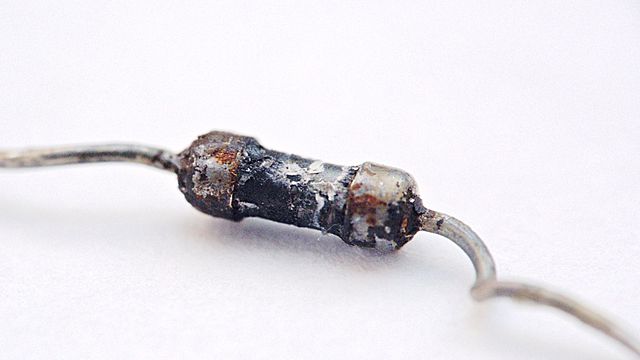Power calculations are required to ensure that devices operate within the manufacturers specified limits. In most cases these only require a single multiplication or division.
Power is measured in watts (W) or milliwatts (mW).
Given V and I …
Power in an electrical circuit is given by
\(P = VI\)
where P is power (watts or W), V is voltage (volts or V) and I is current (amps or A).
Example 1
I have a 12 V LED strip which requires 170 mA. How many watts is that?
\(P = VI = 12 \times 0.17 = 2.04 \, \mathrm W\)
Answer: 2 W.

Given I and R …
From Ohm’s law we know that \( V = IR \) so
\(P = VI = IRI = I^2R\)
Example 2
There is 120 mA flowing through a 22 Ω resistor in my circuit. Will a 0.5 W resistor be able to dissipate the heat?
\(P = I^2R = 0.12^2 \times 22 = 0.32 \, \mathrm W\)
Answer: This is comfortably inside the 0.5 W rating.
Given V and R …
From Ohm’s law again we know that \( I = \frac {V}{R} \) so
\(P = VI = V \frac {V}{R} = \frac {V^2}{R}\)
Example 3
I need to drop 10 V to feed an LED from a 12 V power supply. The resistor value is 490 Ω.
Q1. How much of my battery power will be wasted in the resistor?
\(P = \frac {V^2}{R} = \frac {10^2}{490} = 0.204\, \mathrm W \)
Answer: 0.2 W. A ¼ W resistor should be fine.
Q2. How much power will be dissipated in the LED? (Assume 2 V is dropped across the LED.)
Answer: First we need to calculate the current through the 490 Ω resistor.
\(I = \frac {V}{R} = \frac {10}{490} = 20.4\, \mathrm mA \)Now we can calculate the power:
\(P = VI = 2 \cdot 20m = 40 \, \mathrm mW\)5/6 or 83% of the power is “wasted” in the resistor.

